Posted on August 31st, 2011 by axb
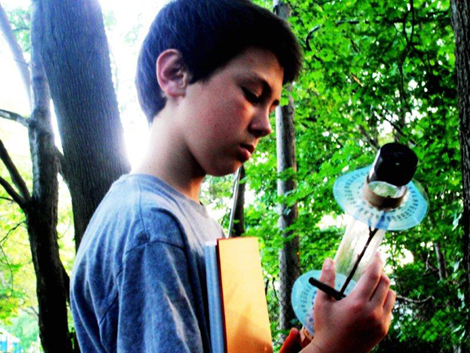
On a hike through the Catskill Mountains in New York, seventh-grader Aidan Dwyer noticed that the branches of oak trees seemed to grow in a certain pattern. Inspired to try his hand at biomimicry, he created a tree-like arrangement of small solar panels capable of generating 20-50% more energy than traditional flat designs.
Dwyer’s solar tree is based on a mathematical concept called the Fibonacci sequence, which was discovered in the late middle ages.
Read More
Filed under: e-News, Environmental | 5 Comments »
Tags: Biomimicry, Energy, Environmental, Green Technology, Solar
Posted on June 22nd, 2011 by axb
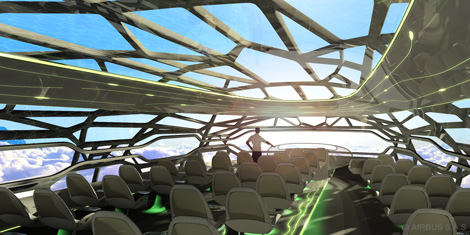
Have you ever wondered what air travel might look like in the year 2050? Aircraft manufacturers at Airbus have, and to them the future looks exceedingly bright (and comfortable).
Their new Concept Cabin, a futuristic design created for the 49th biennial Paris Air Show, features a transparent roof that can adjust its opacity, giving passengers a panoramic view of the skies. The streamlined web that supports this canopy will be made of a lightweight titanium modeled after bird bones. Airbus engineers even predict that much of the cabin will be able to be 3D printed.
Read More
Filed under: Aerospace, e-News, Transportation | 11 Comments »
Tags: Aeronautics, Aerospace, Biomimicry, Transportation
Posted on May 4th, 2011 by jxh
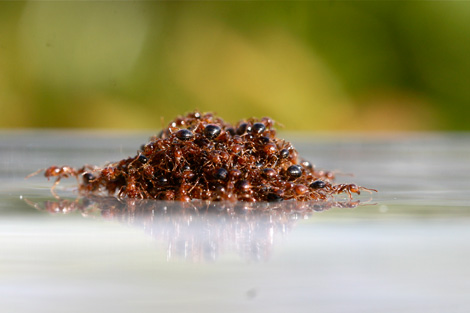
After closely studying the biomechanics of
cats, dogs, and
jellyfish, engineers are turning their attention to more bothersome critters:
fire ants.Engineers at the Georgia Institute of Technology examined the notoriously feisty ants more closely and discovered that the hairy surface of their rough skin makes it difficult for water to penetrate, much as duck feathers repel water because of their tiny bumps. Their work could lead to the development of new and better waterproof materials.
Read More
Filed under: e-News, Materials | 1 Comment »
Tags: Biomimicry, Materials, Robotics
Posted on February 28th, 2011 by jxh
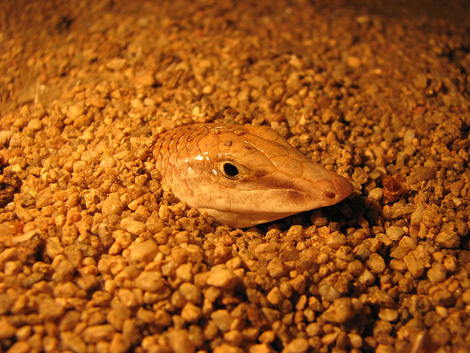
Biomimicry is back!
By studying lizards, a team of researchers has created a snake-like robot that can move through sand. The new robot is the most detailed model of an organism moving through an environment that is not water or air.
The Georgia Institute of Technology researchers studied the sandfish lizard, which is able to burrow into sand to avoid predators or escape the desert’s heat.
Read More
Filed under: e-News, Electrical, Mechanical | 5 Comments »
Tags: Biomimicry, Electrical, Robotics, Space
Posted on December 3rd, 2010 by axb
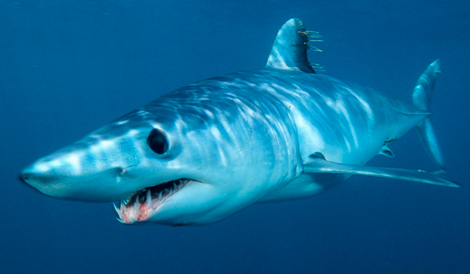
The shortfin mako shark, one of the ocean’s swiftest predators
Biomimicry seems to be popping up all over the news recently, and this week is no exception. While John Dabiri is busy modelling the complex mechanics of jellyfish, another engineer has taken on the study of a different, more dangerous resident of the ocean: sharks.
The shortfin mako shark is known as the “cheetah of the ocean” for its ability to accelerate rapidly and to reach speeds of around 30 miles per hour in the water. One mako shark has even clocked in at over 45 miles per hour (the world’s fastest human sprinters swim at about 5mph)!
Read More
Filed under: Aerospace, e-News, Mechanical | Comments Off on Aerospace Engineer Discovers Speedy Shark Secrets
Tags: Aerospace, Biomimicry, Mechanical













